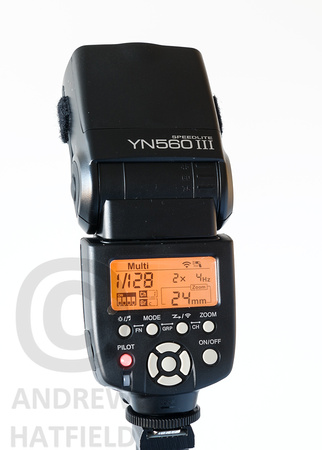Yongnuo YN560-TX Flash Controller and YN560 III Speedlites for Interior Photography
This is a quick review of these 2 relatively new Yongnuo products from and interior photographers perspective. This is not meant to be a detailed review of the TX unit and flashes as there are already lots of good reviews about. It’s really to fill in a few gaps and answer some of the questions I had before buying the equipment.

 When I started photographing interiors I used Nikon strobes but working in small spaces, shoots can be really hard on flashguns. The stands are constantly knocked over as they are placed behind doors or just as a consequence of having too much kit in a small space. Often flashes are placed on top of doors, inside light fittings, log burners, ovens etc and all these things can quickly lead to irreparable costly damage to your precious strobes. The need to replace a £350 flashgun can make quiet a dent in a day’s fee so these were quickly replaced by a set of Nissin Di622 MK1 flashes. These could be brought for about £100 new or £60 S/H and combined with a set of Yongnuo RF 602 TX RX units have worked well for the past few years. Nissin parts are readily available and broken feet or cases are quickly and cheaply replaced after a quick email to Kenro the importers.
When I started photographing interiors I used Nikon strobes but working in small spaces, shoots can be really hard on flashguns. The stands are constantly knocked over as they are placed behind doors or just as a consequence of having too much kit in a small space. Often flashes are placed on top of doors, inside light fittings, log burners, ovens etc and all these things can quickly lead to irreparable costly damage to your precious strobes. The need to replace a £350 flashgun can make quiet a dent in a day’s fee so these were quickly replaced by a set of Nissin Di622 MK1 flashes. These could be brought for about £100 new or £60 S/H and combined with a set of Yongnuo RF 602 TX RX units have worked well for the past few years. Nissin parts are readily available and broken feet or cases are quickly and cheaply replaced after a quick email to Kenro the importers.
There were a few problems with the Di622 /RF 602 set up though. The main one being that the power of each flash had to be adjusted separately so walking to 4 or 5 flashes dotted around the shoot to adjust the power of each one was a constant pain, particularly when taking bracketed shots. Also the focus of the flash cannot be adjusted when it’s not fitted to the hot shoe of a camera, placing a greater reliance on having the correct modifier, and finally the RF 602 TX unit the RX unit and the flash heads all took different batteries. Meaning 3 different sets of spares had to be taken to each shoot. Finally the Di622 would power down after about 10 mins of inactivity and would often have to be revisited to turn them back on. I was happy with the set up at the time as it offered the best compromise of cost, portability and reliability available at the time but technology continues to develop offering more features at lower cost.

 I have now changed over to the Yongnuo YN560-TX Manual Flash Controller and Yongnuo YN560 III Speedlites the controller is about £30 and the flashes about £45 from Amazon.
I have now changed over to the Yongnuo YN560-TX Manual Flash Controller and Yongnuo YN560 III Speedlites the controller is about £30 and the flashes about £45 from Amazon.
The build quality of the new kit appears particularly good and big step up from the build quality of the old Yongnuo products and that offered by the Di622’s. The features and benefits of the new set up when compared to my old kit are fairly significant.
Each flash includes its own built in RX unit removing the need for separate RX units, reducing the amount of kit to carry.
The flash and TX controller use the same rechargeable AA batteries.
The controller can be used to remotely adjust the individual power and zoom of up to 6 groups of flashes, each group can contain any number of flashes. Zoom from 24mm – 105mm and power from 1/128 in 1/3rds or full stops. It is simple to set each flash to its individual group. It is not possible to test fire each group individually though so you need to lay out the flashes in a logical manner to make sure you don’t waste time remotely adjusting the wrong flash unit.
One of the most significant advantages of the new units is the adjustable flash frequency. With the old Nissin units you were limited to using a single light pop for each shutter operation. This limited the amount of light you could apply to the scene regardless of the exposure time. So for instance if you wanted an exposure time of say 8 seconds to capture the right level of ambient light and wanted to supplement this with some local fill flash your were limited to a single flash pop. Once the Di622 was up to full power the only option was to use multiple flash heads to increase the local light levels. With the YN 560 combo you can set the frequency and number of flash pops, and so with our 8 second exposure we could set the flash and controller to supply multiple pops in that 8 second exposure. Using the Number and Frequency options we can specify a number of pops or just keep firing at say 10 Hz or for the duration of the shutter opening. Total number is adjustable from 1-40 and the frequency is adjustable from 1-100 Hz. Obviously this flexibility is limited by the flashes recycle time to one flash every 3 seconds when using the internal battery pack, but still offers a vast improvement in the available power available.
The TX unit is also able to fire the Nikon camera via the TX units sync port and accept a signal from a Yongnuo RF 603 TX unit and so a single remote press from the RF 603 can operate the shutter and fire the flashes at the same time.
The standby time and power off time of the strobes are adjustable with a few options including On all of them time, which is a real bonus.
The TX unit and Flash/RX unit both have locking tripod feet where as the old RF 602 units I used did not lock.
I have used the new set up on a couple of shoots so far and it has all worked flawlessly. The TX range is good working though multiple stone walls. Breakages are likely to be more expensive than the Nissin units as I am guessing it is going to be difficult to get Yongnuo spare parts although at £40/unit this is not the end of the world.
A couple of other points that aren’t really relevant to interior photography but worth noting are the TX unit can also work as an IR focus assist light if needed and the Flash units can be run from an external battery pack to reduce the cycle times.
I will try and report back on long term reliability but the build quality of the units and the past reliability of my Yongnou RF 602 1nd 603 kit suggests there may not be much of a problem.